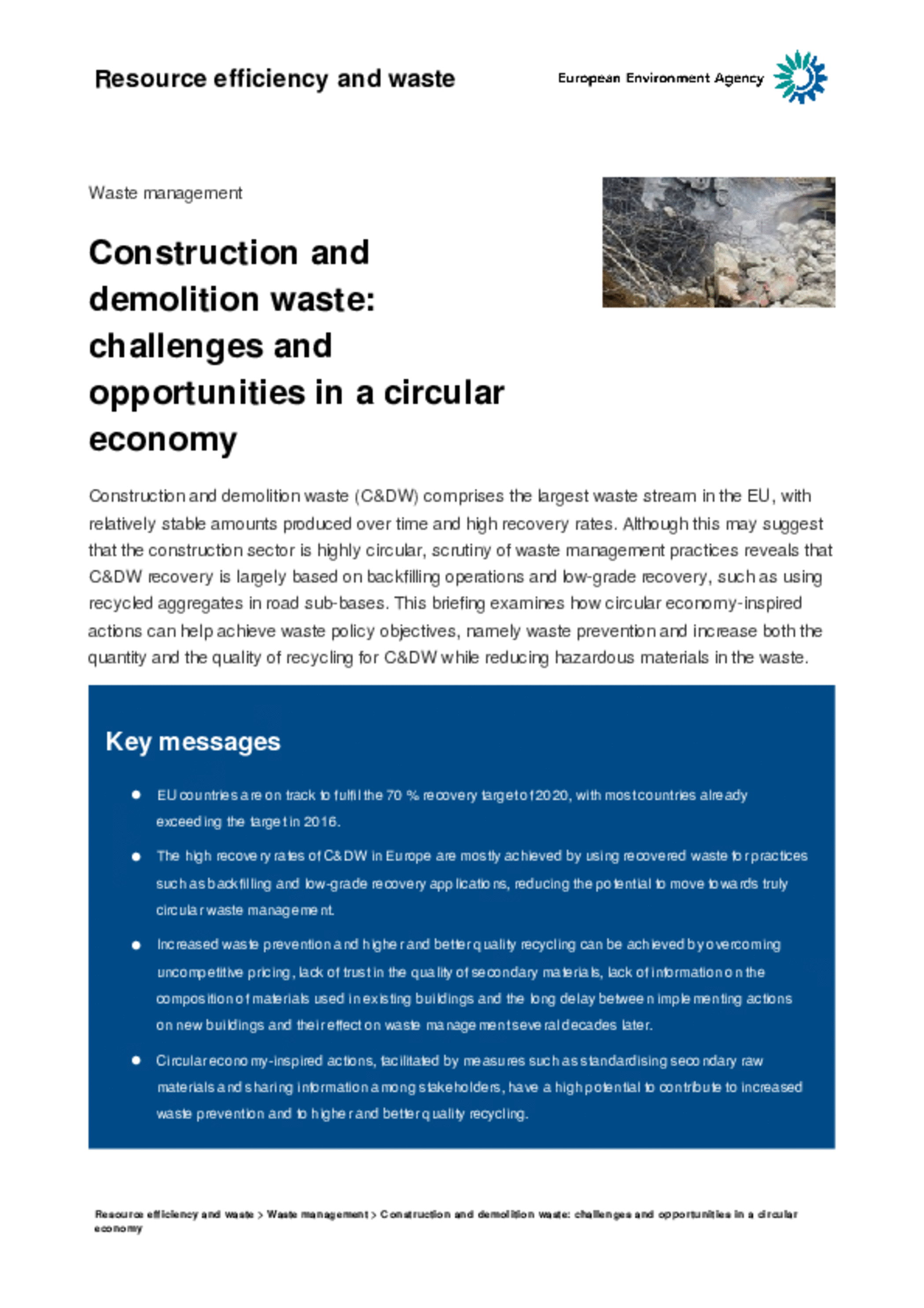All official European Union website addresses are in the europa.eu domain.
See all EU institutions and bodiesBriefing 14/2019
Construction and demolition waste (C&DW) comprises the largest waste stream in the EU, with relatively stable amounts produced over time and high recovery rates. Although this may suggest that the construction sector is highly circular, scrutiny of waste management practices reveals that C&DW recovery is largely based on backfilling operations and low-grade recovery, such as using recycled aggregates in road sub-bases. This briefing examines how circular economy-inspired actions can help achieve waste policy objectives, namely waste prevention and increase both the quantity and the quality of recycling for C&DW while reducing hazardous materials in the waste.
ISBN: 978-92-9480-202-6

